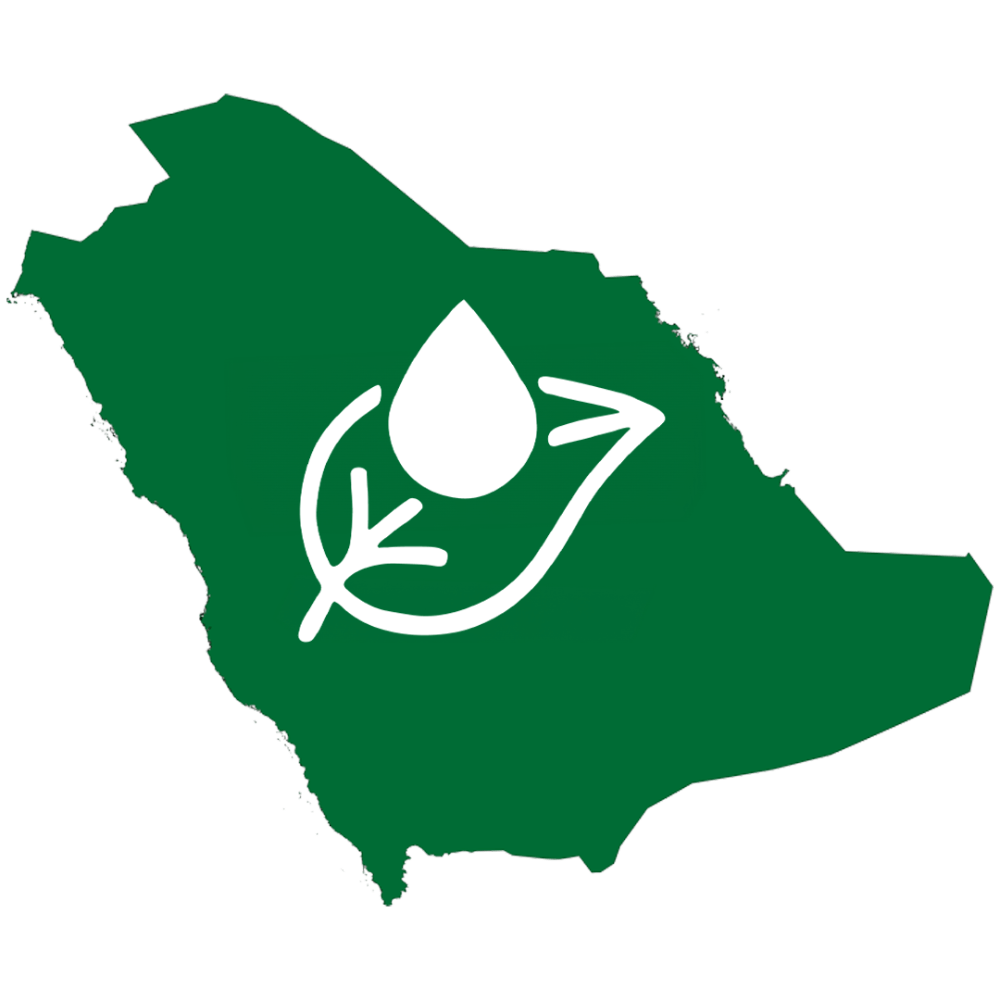
Leaf Global Environmental Services completed an environmental baseline assessment of the marine (subtidal), (coastal intertidal), and terrestrial (supratidal) habitats along the entire length of the Kingdom of Saudi Arabia’s Red Sea Coast. New data regarding the spatial distribution and types of habitats and their associated fauna and flora were collected and collated with existing data; only limited amounts of existing data were identified as being suitable for inclusion in this assessment database.

ARABIAN GULF COASTAL
The Kingdom of Saudi Arabia’s National Center for Environmental Compliance has overseen a large scale remediation and restoration program aimed at mitigating damages that occurred to terrestrial and marine habitats during the 1991 Gulf War. These damages were associated with the massing of coalitional military forces within the kingdom’s northern border province and the release of oil into the Arabian Gulf, which smothered intertidal habitats within its Eastern Province, respectively and, as a result, altered or disrupted tidal flow. In addition, the deposited crude oil formed a physical barrier that prevented the recruitment of infauna by prohibiting the burrowing of organisms into the substrate. We have been involved on this prestigious program over the last 10 years. Leaf Global Environmental Services has worked on several of the program’s coastal remediation projects, which involved the removal of (excavation) and/or homogenization (tilling/ripping) of lingering oil residues and the restoration of salt marsh hydrology. The latter was accomplished by re-establishing tidal channel morphometry through various excavations and recontouring treatments. In addition, Leaf Global Environmental Services has re-established and locally augmented the flora assemblages within salt marsh and tidal flat habitats through the transplantation of perennial halophytes including mangroves.
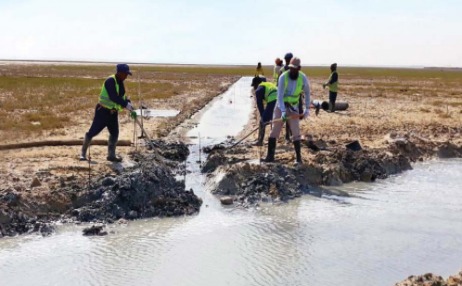
of tidal channels, decomposed
650,00m2
of oil-contaminated tidal flat
substrate & excavated
200,000m2
of asphalt pavements.

RED SEA COASTAL
Leaf Global Environmental Services completed an environmental baseline assessment of the marine (subtidal), (coastal intertidal), and terrestrial (supratidal) habitats along the entire length of the Kingdom of Saudi Arabia’s Red Sea Coast. New data regarding the spatial distribution and types of habitats and their associated fauna and flora were collected and collated with existing data; only limited amounts of existing data were identified as being suitable for inclusion in this assessment database. Baseline data made it possible to quantify any injuries associated with short-term events, such as hazardous material spills, vessel groundings, etc. and/ or longer-term impacts associated with developmental pressures. The primary objective of this baseline assessment was to collect new data along KSA’s entire west coast in a coherent manner in an effort to supplement existing data. The new data acquired during this assessment includes
- Classification of supratidal (within 5 km of the shoreline), intertidal, and subtidal (up to 110 km offshore) habitats.
- Semi-quantitative survey of the coastal environment (ecosystems, species, humanuse/socio-economic features) by Rapid Environmental Assessment (REA).
- Classification of the environmental sensitivity of KSA’s Red Sea shoreline; this is based on the behavior of hazardous materials (such as oil) on the various shoreline types located along KSA’s west coast.
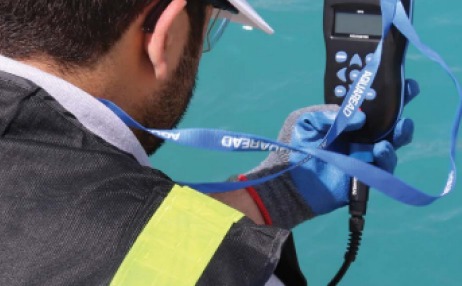
within 5 km of the
shoreline
110 km
subtidal up to 110 km
offshore

KING ABDULAZIZ
King Abdulaziz International Airport (KAIA) is located approximately 20 km north of the city of Jeddah. It is the third largest airport in Saudi Arabia. KAIA is the main gateway to the holy cities of Makkah and Madinah. In order to meet increasing numbers of aircraft movements and passengers, the General Authority of Civil Aviation (GACA) of Saudi Arabia commissioned a -3 Phase Master Plan for the construction of a new terminal and development of the airport’s facilities and grounds. Phase I is currently underway and Phase III is scheduled to be completed in 2035. The master plan incorporated the principle of environmental sustainability into the design of the new facility as GACA aimed for the project to achieve Leadership in Energy & Environmental Design (LEED) Silver Status. The construction works and subsequent operation of the airport was implemented in such a manner as to ensure sustainability. The project introduced a new 670,000 m2 passenger terminal equipped with business and first-class lounges and an internal automated people mover linking the passenger processing areas, the gates and a state-of-the-art baggage handling system, airport hotel, and retail facilities. It also introduced a transportation center with an integrated train station that accommodates the new highspeed rail service that connects the cities of Makkah and Madinah through Jeddah and King Abdullah Economic City. Furthermore, an air traffic control tower that is over 130 m high and equipped with the latest air traffic control technology, taxiways, aprons, roads, tunnels, utilities networks, and other support facilities, including a fuel tank farm and hydrant network. Finally, a nursery and garden center to serve the airport and its surrounds.

A new air traffic control tower
that will be over 130m high
670,00m2
A new 670,000 m2 passenger terminal
equipped with business and
first-class lounges
2035
(GACA) Phase III is scheduled
to be completed in 2035

KINGDOM CITY
The Kingdom City Development Project (KCDP) site is located on Saudi Arabia’s Red Sea coast at the entrance of shamal obhur, which is approximately 40 km north of Jeddah’s Central Business District. KCDP is one of the largest and most comprehensive real estate development projects ever to be built in Saudi Arabia. It covers an area of over 7km2 and includes commercial, residential, institutional, educational, entertainment, retail, and hotel facilities. Kingdom City houses 80,000 residents and accommodates 250,000 visitors. The center piece of the development is the landmark Kingdom Tower, which was constructed to a height of over 1,000 m; and is the tallest building in the world. The tower includes fivestar hotel accommodations, commercial office space, and luxury apartments; all with views of the Red Sea to the west and the Sarawat Mountains to the east. Leaf Global Environmental Services completed an EIA for the KCDP site within the -6month period between September 2010 and March 2011.
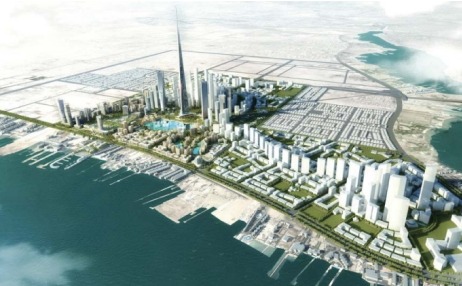
It covers an area of over
7km2 and includes
commercial, residential
80,000
expected to house
80,000 residents

JAZAN ECONOMIC
The Jazan Economic City (JEC) is situated in southwestern Saudi Arabia along its Red Sea coast. In 2009, Leaf Global Environmental Services completed an EIA for the JEC port, which consists of a harbour construction (for handling the movement of construction goods, materials, and equipment) and the main port (for import and export of raw materials and processed cargos to/from the industries within JEC). Offshore/Shoreline works included dredging (channels, berths, basins), land reclamation, the construction of shoreline protection features (break waters, rip rap revetments, sea walls), quays, moorings, a marine pipeline and liquid jetty. Onshore works included buildings, storage facilities, and associated infrastructure (roadways, utilities, etc.). The EIA included an extensive marine survey that established a baseline of water quality and of the diversity and abundance of various marine life, including phytoplankton, zooplankton, seagrasses, macroalgae, benthic invertebrates, fish, corals, and marine mammals. In addition to the marine survey, Leaf Global Environmental Services established a baseline of air quality and background noise levels and performed an ecological survey of terrestrial habitats. Leaf Global Environmental Services also prepared an environmental monitoring and management plan, a turbidity monitoring plan, and a construction and operations environmental management plan for this project.
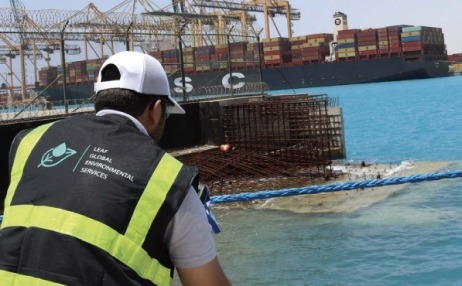

KING ABDULLAH
King Abdullah Economic City (KAEC) is located on the Red Sea coast roughly 85 km north of Jeddah. This city is one of five economic cities being built in the Kingdom of Saudi Arabia and part of its plan is to attract more foreign investment, increase its international trade, and grow its industrial base. KAEC is designed to support over 125 million m2 of development and contains the following six development districts: sea port, industrial zone, central business district, educational zone, residential zone, and sea resort. Leaf Global Environmental Services prepared and EIA for the KAEC’s sea port district. The seaport is one of the largest cargo and dry bulk ports in the region and is able to receive megaships. The works associated with the port development include: dredging, reclamation, earthworks, and the construction of breakwater, quay structures, berths, and warehousing and bunkering facilities. The EIA included a marine survey of reef flat and fringing reef habitats. During these surveys, detailed notes were taken regarding reef health, the types of biota present, and coral cover. In addition, data concerning the local meteorological conditions, and near shore oceanographic conditions were compiled.
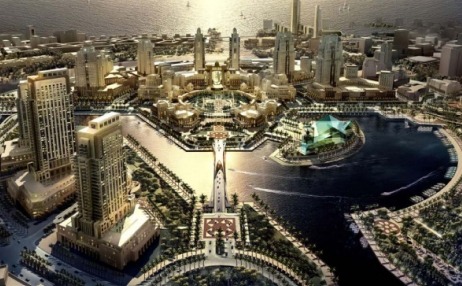
(KAEC) is located on the
Red Sea coast roughly
85km north of Jeddah
125million
KAEC is designed to
support over 125 million
m2 of development

CORAL REEF RESTORATION
This project was in response to a request from Saudi Aramco’s Environmental Protection Department Contracts Unit, Dhahran to undertake constructing, deploying and monitoring 2000 artificial Reef Modules near Abu Ali Island and at another 24 sites within the proximity of Saudi Aramco’s designated coastal areas in the Eastern province of Saudi Arabia. Saudi Aramco’s scope of work for this contract requires construction, deployment and monitoring of 2000 artificial reef modules near Abu Ali Island and at another 24 selected sites, simultaneous pre and postdeployment surveys of selected sites and an evaluation of reef functionality over the duration of two (2) years in the Eastern Province of Saudi Arabia. Leaf Global Environmental Services designed and constructed in house 5 different configurations of concrete modules for under water deployment specifically for this Aramco Project.

Artificial reef modules spread
throughout the Arabian Gulf
24
Sites within the proximity of Saudi Aramco’s
designated coastal areas in
the Eastern province of Saudi Arabia
05
Different configurations
and installation designs

